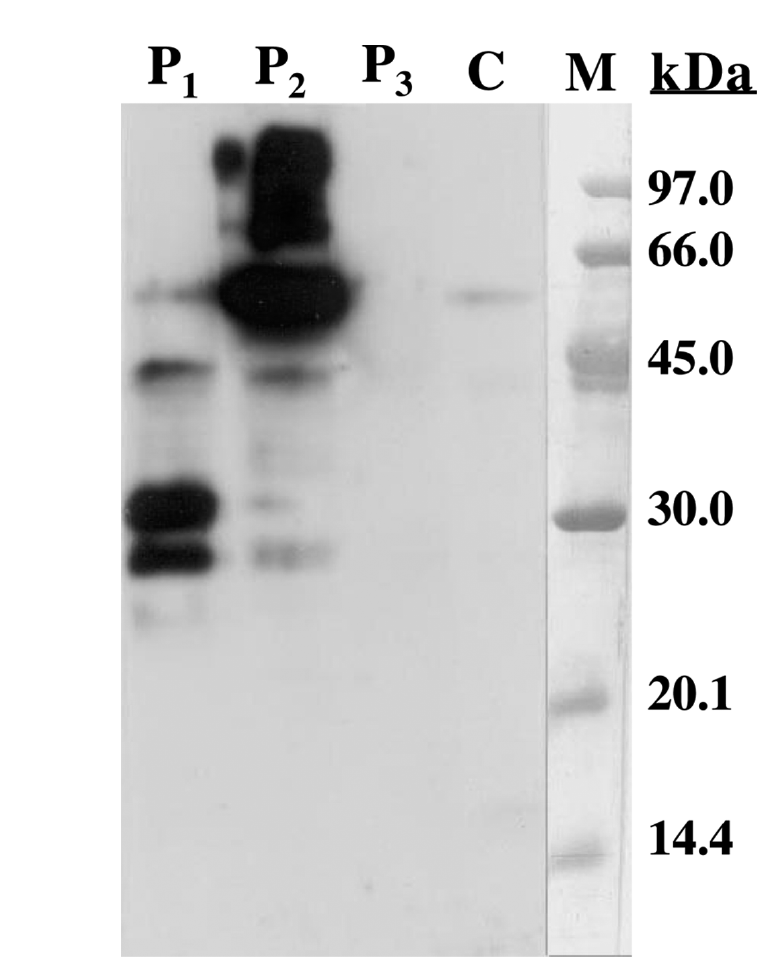INTRODUCCION
Grape is the fruit of Vitis vinifera, a plant that belongs to the Vitaceae family. It is consumed as fresh fruit and used to elaborate juices or alcoholic drinks. In the literature we have found reports of allergic reactions to all different types of grape (1-4) and also cases of anaphylactic reactions caused by eating grape and posterior exercise (5). Some allergens of grape have been identified; the mayor allergen is an endochitinase 4A with a molecular mass around 30KDa (6). We report a case of a young women who remains asymptomatic when eats alone grapes or drinks alcohol, but presented anaphylactic reactions when take grapes and alcohol together.
CASE
An 18-year-old woman with allergic rhinitis was referred to our department for allergologic evaluation because she had presented several anaphylactic reactions on New Year's Eve. In our country we usually welcome the arrival of the new year drinking a toast with champagne and eating twelve grains of grape symbolising the twelve strokes of the bell. On New Year's Eve in 1998 the patient presented generalized urticaria, facial angioedema and nasal obstruction twenty minutes after taking twelve grains of grape and a glass of champagne. On New Year's Eve in 1999, ten minutes after taking the twelve grains of grape and drinking champagne she presented abdominal pain, vomits, facial angioedema and nasal obstruction. She presented a good tolerance to champagne, red wine, white wine, vinegar, red grape, white grape and muscatel grape individually. Since 1999 on New Year's Eve she avoids grape.
Skin prick test using a battery of aeroallergens was positive for dust mites (Dermatophagoides pteronyssinus and Dermatophagoides farinae) and weed pollen (Salsola kali and Chenopodium album). Total serum IgE was 61.4 kU/l and specific IgE to Dermatophagoides farinae was 1.01 kU/l, to Salsola kali was 3.20 kU/l and to Chenopodium album was 0.74 kU/l. Skin prick test with a commercial extract of white and red grape was negative. The prick-by-prick test was positive for red grape (5 × 5 mm), white grape (9 × 7 mm) and negative for champagne with a wheal 4 × 4 mm for histamine. No grape-specific IgE could be demonstrated in the patient's serum by the CAP-RAST technique.
Initially the patient was diagnosed of a grape allergy and we recommended her to avoid grape. Months later the patient came back to our department explaining that she had eaten grapes with good tolerance. The next step was an oral challenge with grapes and champagne. We administered a grain of grape and 5cc of champagne without experiencing any adverse reaction. An hour later, due to the good tolerance, we administered twelve grains of grape and 50 cc of champagne: twenty minutes later the patient presented the symptoms she had complained of on New Year's Eve. Our final diagnosis was alcohol-induced grape allergy. Since then on New Year's Eve she takes 12 olives and champagne without any allergic symptom. She tolerates grape and champagne individually.
A red grape extract was prepared for immunologic studies: electrophoresis by SDS-PAGE technique and IgE Immunoblotting with the sera of three patients. We used the patient's sera (case 1) and also the sera of two patients with allergic reactions to grape: a woman who complained of angioedema on the lips and oral pruritus after eating grapes (case 2) and a man with anaphylactic reactions after eating grapes (case 3). These two patients tolerated alcoholic drinks. The prick test with commercial grape extract was negative in cases 2 and 3 but the prick by prick was positive in both of them. Grape-specific IgE could be demonstrated by the CAP-RAST technique in both cases: 0.62 kU/l in case 2 and 0.52 kU/l in case 3.
Figure 1 showed the IgE immunoblotting results obtained after incubating the grape extract with the three patients' serum. In case 1 it shows IgE binding at proteins of 28 kDa, 30.6 kDa, 43 kDa and 56 kDa. In case 2 it shows IgE binding at proteins of 28 kDa, 30.6 kDa, 43 kDa, 56 kDa, 75 kDa (IgE-binding bands of 43 kDa and 56 kDa appeared when control lane is over exposed). In case 3 none IgE binding is detected.
Figure 1.--IgE immunoblotting of red grape extract with sera from a patient who had presented allergic reactions after eating grapes and alcohol (lane P1) and from two patients who had presented allergic reactions after eating grapes (lane P2 and P3). The last lane (lane C) corresponds to control serum (serum pool from non atopic subjects) Lane M: Molecular mass marker.
DISCUSSION
Allergic reactions to grape have been rarely reported. Our patient had several anaphylactic reactions after the taking grapes and alcohol, whereas she tolerated champagne, red wine, white wine, vinegar, red grape, white grape and muscatel grape individually. All reactions have always occurred when the patient token grapes and champagne, so alcohol was a cofactor in the anaphylactic reaction. Ig E-mediated reactions to grape have been demonstrated by the positive prick-prick for red and white grapes.
Pastorello et al (6) described a mayor allergen (80 % patients) as an endochitinase 4A which appeared in immunoblotting as a double IgE-binding band around 30 kDa, a molecular mass similar to that showed by two of the IgE-binding bands here described (30 and 28 kDa). Another mayor allergen describe was a lipid-transfer protein (LTP), that was homologous to and cross-reactive with peach LTP. A 24 Kd protein homologous to cherry thaumatin-like allergen, was a minor allergen also described. This explains why some patients with grape allergy have cross-reactivity to other foods, and another, as our case, are monosensitized to grapes.
In summary, we report a case of alcohol-induced anaphylaxis to grape. No different allergens to grape were identified when alcohol is a cofactor.
Correspondence:
P. Gaig Jané
Allergy Unit
Hospital Universitari Joan XXIII
Mallafre Guasch, 4
43007 Tarragona. Spain
E-mail: pgaig.hj23.ics@gencat.net






